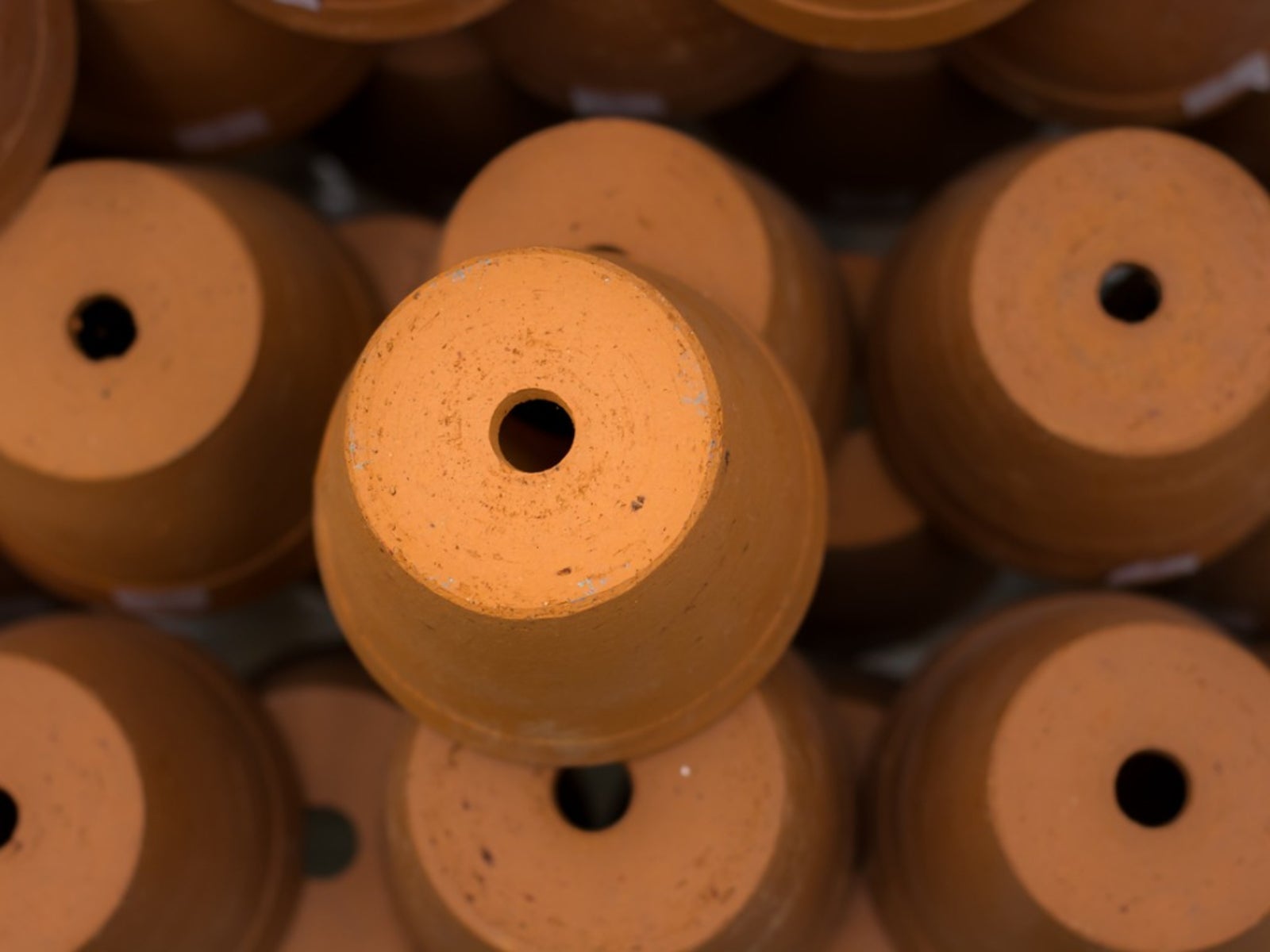Why Are Drainage Holes Important: Do Pots Need Drain Holes

Why are drainage holes important? No matter what type of plants you are growing, using containers with drainage holes is essential to their health. A lack of drainage is one of the most common culprits in cases of unhealthy and dying plants.
Why Do Pots Need Drain Holes?
With the exception of a few aquatic plants, plant roots don’t like to sit in water. They need to exchange oxygen and carbon dioxide with the air, and excess water closes off the air pockets in soil. Plants in pots without drainage holes are prone to becoming overwatered. Even if the soil surface appears dry, the soil at the bottom of the pot may be sopping wet. Waterlogged soil can lead to root rot, a serious condition that can easily kill your plants. Signs of root rot include wilted leaves that don’t perk up after watering, yellow leaves, and leaf drop. If you remove the plant from the container, you may see black or brown, slimy, or mushy roots. Another major reason to make sure that there are enough holes in pots is to prevent salt buildup in the potting soil. Tap water and fertilizers contain salts that can harm plants. As plant roots take in water, they leave some of the salts behind, and salts concentrate in the soil over time. When you water thoroughly and let the water flow out through the drainage holes in the bottom of the container, salts are flushed out of the soil. With no drainage holes, salts are never removed from the soil but just keep building up, creating an unhealthy environment for your plants. If salts do build up in your potting soil, you may see the plant’s leaves turning brown on the tips and edges, or you may see a whitish crust of salt on the soil surface. Many homeowners keep their houseplants sitting in saucers to protect the furniture or floor from drips. This is fine, but make sure water does not sit in the saucer, where it can wick right back into the potting soil. Be sure to dump the water out of each saucer regularly. Or try watering your plants in the kitchen sink, then moving them back to the saucers after they drain.
Can You Use Pots Without Drainage Holes?
If your pot came without a drainage hole, see if you can drill holes in the bottom. If it is impossible to drill holes in your container, try using it as a decorative pot in a “double potting” system. Pot up your plant in a smaller container with drainage holes, then place the smaller pot inside the larger, decorative pot. Every time you need to water, simply remove the smaller container and water it in the sink. When it’s finished draining, replace it in the decorative pot.
Sign up for the Gardening Know How newsletter today and receive a free copy of our e-book "How to Grow Delicious Tomatoes".
Ilana Goldowitz Jimenez is a scientific and agricultural writer with a B.S. in Plant Sciences from Cornell University and a PhD in Chemical Biology and Infectious Disease from Harvard University.